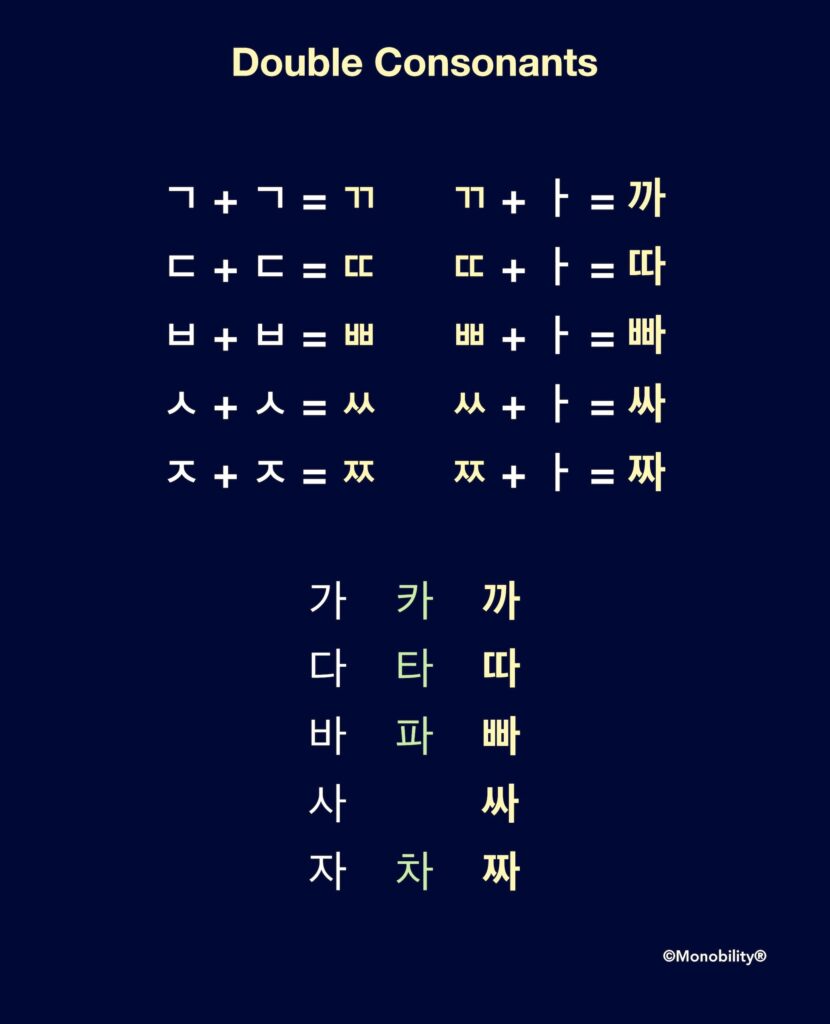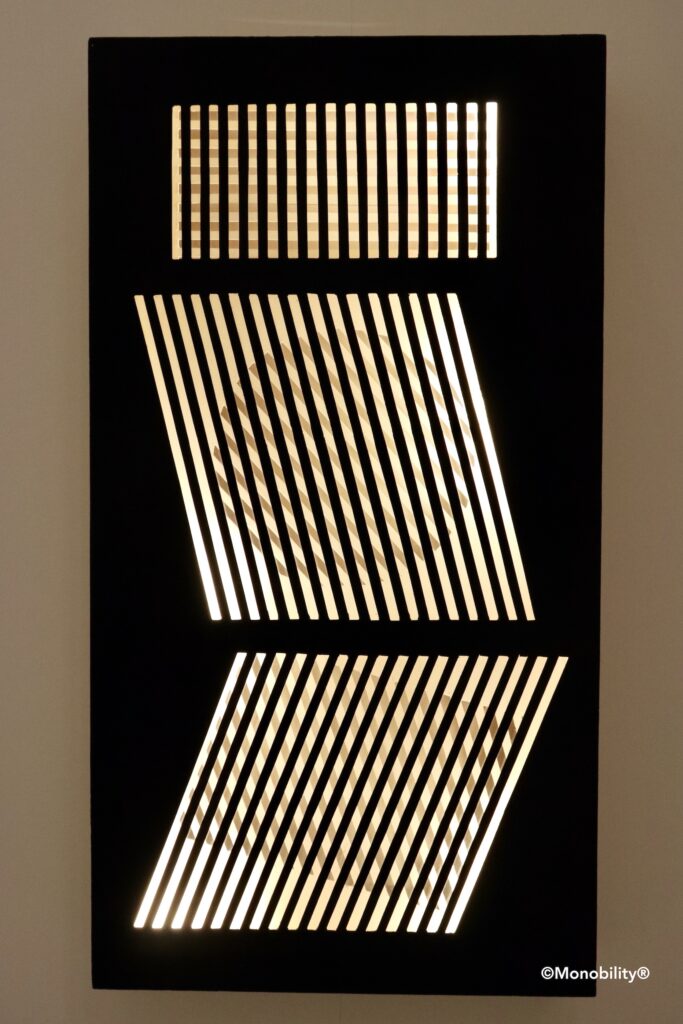In addition to 14 basic consonants, there are five “double” consonants formed by adjoining two of each unaspirated consonant ㄱ, ㄷ, ㅂ, ㅅ, and ㅈ:
- ㄱ + ㄱ = ㄲ
- ㄷ + ㄷ = ㄸ
- ㅂ + ㅂ = ㅃ
- ㅅ + ㅅ = ㅆ
- ㅈ + ㅈ = ㅉ
With the letters doubled, their pronunciation is more stressed, and should sound distinctly stronger than the basic consonants. But “stronger” doesn’t mean that the pronunciation gets “aspirated.” Except for “ㅆ”, all four of them ㄲ, ㄸ, ㅃ, ㅉ should stay “unaspirated” as the basic ones. It’s because Korean already has “aspirated” consonants in the basic list: ㅋ, ㅌ, ㅍ, and ㅊ.
I strongly suggest that you listen repeatedly to the voice recordings in the video, and practice pronouncing each of them, one by one, comparing one another. Koreans distinguish them very clearly from childhood. “ㅆ” sounds like the initial [s] followed by a vowel in English. “싸랑해요!” sounds totally different from “사랑해요!” to Koreans, remember?
The aspirated ㅋ, ㅌ, ㅍ are close to initial, aspirated [k], [t], [p] in English, whereas the double consonants ㄲ, ㄸ, ㅃ sound as strong and unaspirated as c, t, p in Spanish. For example, “toad” in English would be written “토우드”, not “또우드”. But “todo” in Spanish would be best transliterated as “또도”, not “토도.” As you see, the Korean tongue can be very versatile in this respect.

Join Monobility® Group for much more:



